Fawn, smoke, lilac. Sounds like a luxury handbag drop, not a list of cat coats. Yet these shades rank among the rarest cat colors on the planet. You won’t spot them lounging in just any living room or hear much about them during a routine vet visit.
These coats turn heads and stop conversations in their tracks. The tricky bit is telling the difference between a true genetic gem and a cat edited within an inch of its pixels. This guide cuts through the noise, busts the myths, and highlights the rare fur shades that are the real deal.
Why Rare Cat Colors Matter 🐈⬛
Not every cat needs a dramatic pose to make an entrance. Some let their coats do the heavy lifting. Rare cat colors speak louder than meows.
These hues come wrapped in pedigree, passed down through careful breeding and generations of feline finesse.
A lilac haze or a warm cinnamon coat isn’t just eye candy. It hints at something exceptional, something you won’t find in your average tabby.
Humans are hardwired to notice what stands out. That’s why these coats create a moment. Someone always leans in and whispers, ‘What breed is that?’ It’s the same curiosity that sparks when people discover weird cat breeds.
These shades change a cat’s entire presence. They glow in natural light, photograph like stars, and turn an ordinary nap into a full editorial. In a sea of lookalikes, these coats walk in like royalty.
15 Rare and Stunning Cat Colors😻
Many cat coats look pleasant, but these walk in like headliners. The shades ahead are so rare they seem unreal, each with its own backstory, genetic twist, and a touch of glamour.
1. Lilac Smoke
With a silver base dusted in lavender, the lilac smoke cat walks straight out of a dream. This rare beauty appears in breeds like the British Shorthair and Persian, thanks to a diluted black pigment and a recessive gene that makes magic happen.
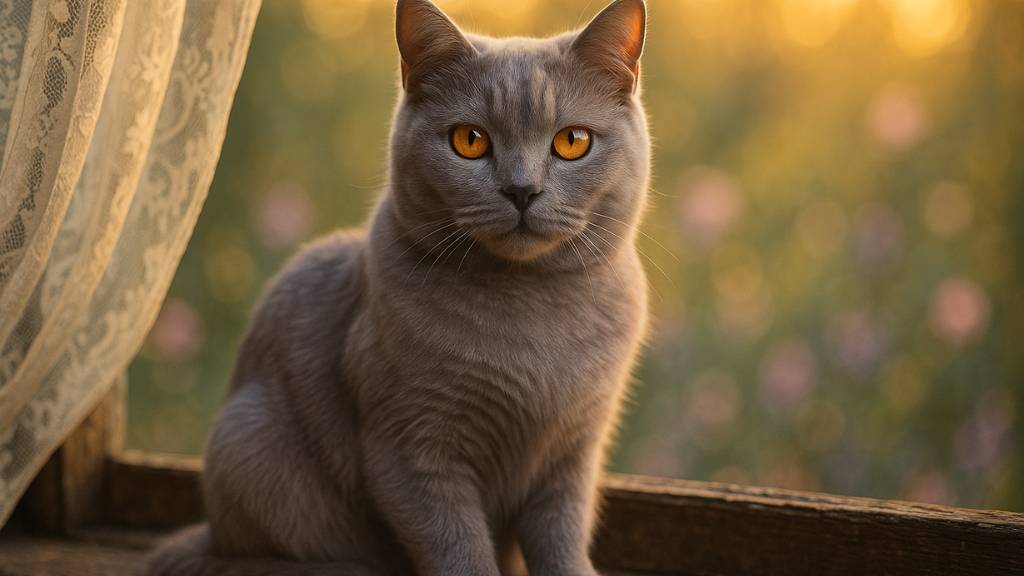
The result is a coat so photogenic it might as well come with its own lighting crew. Breeders know this one doesn’t just purr. It stuns.
2. Cinnamon
Cinnamon cats wear fall. Their coats echo autumn leaves and warm spice lattes, with a reddish-brown glow that looks made for golden hour. You’ll spot this rare shade in Oriental Shorthairs and Abyssinians, where recessive genes pull all the strings.
Breeders need precision, but the results are pure cozy luxury.
3. Lavender
Lavender cat color is rare and real. Often mistaken for lilac or blue, true lavender leans into a silvery-pink softness that plays tricks in the light—much like the unique sparkle of different cat eye colors.
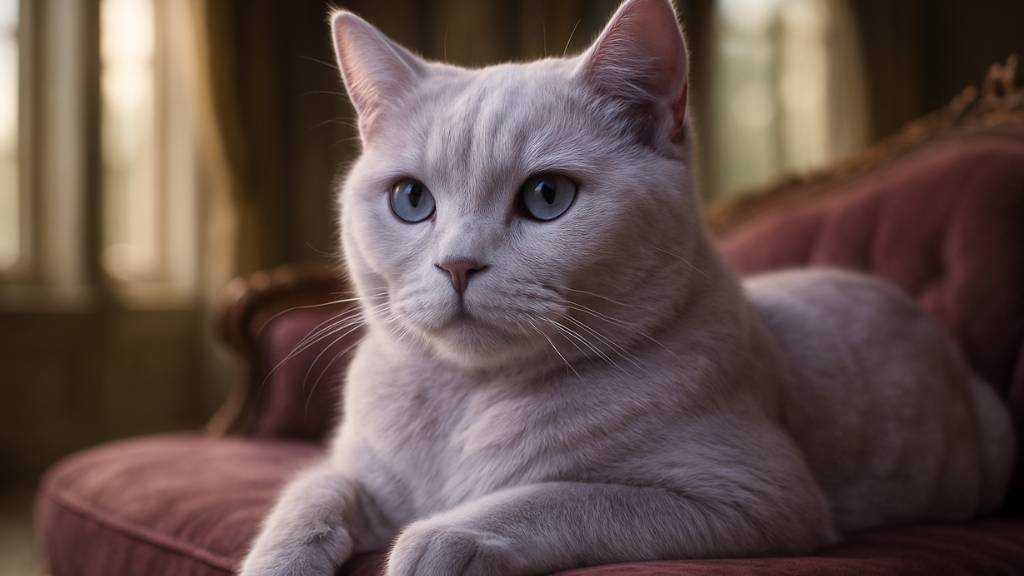
Breeders use the term loosely, but once you see the real thing, there’s no mistaking it.
4. Fawn
Fawn is the quiet luxury of cat colors. This soft beige-tan tone, diluted from cinnamon, floats on breeds like the Devon Rex and British Shorthair.
It often gets confused for champagne or taupe. Fawn has a powdery finish that sets it apart: refined, delicate, and totally photogenic.
5. Purple-Tinted Breeds
There’s no such thing as a truly purple cat, but a few breeds get close enough to start rumors. Russian Blues, Korats, and Chartreux cats carry coats with a violet-blue haze that shifts in natural light.
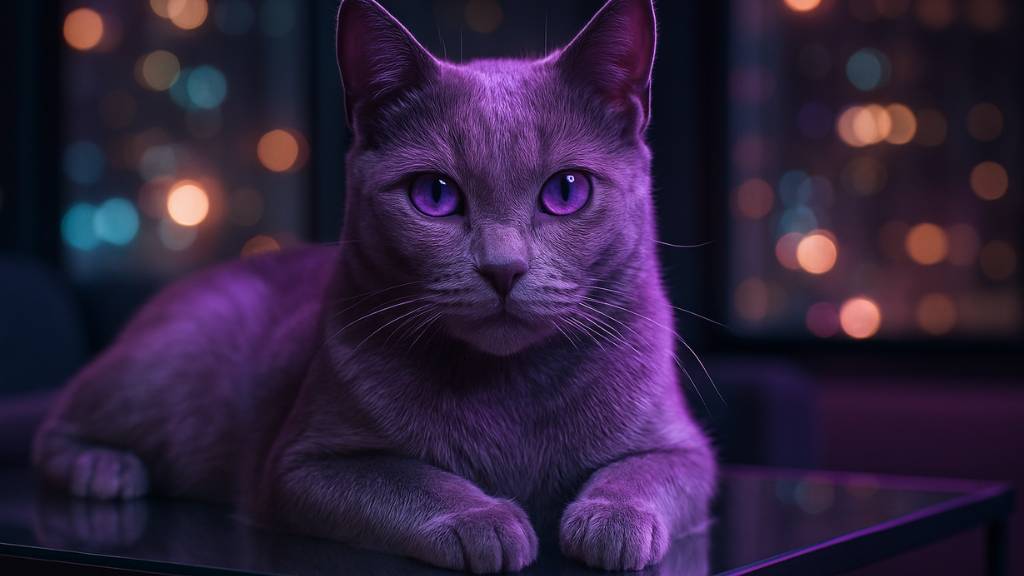
The term “purple cat breed” stretches the truth, but these cats are walking optical illusions.
6. Chocolate Smoke
Chocolate smoke cats wear their coats like velvet drapes. A mix of deep brown at the roots and soft smoke at the tips creates a contrast that looks painted on. Persians and British Longhairs wear this shade best.
It’s the dark roast of rare cat colors: rich, bold, and impossible to overlook.
7. Cream Point
Cream point cats look like they were painted in watercolor. Soft cream coats with slightly darker accents show up in Siamese and Himalayan breeds, thanks to temperature-sensitive genes doing their quiet work.
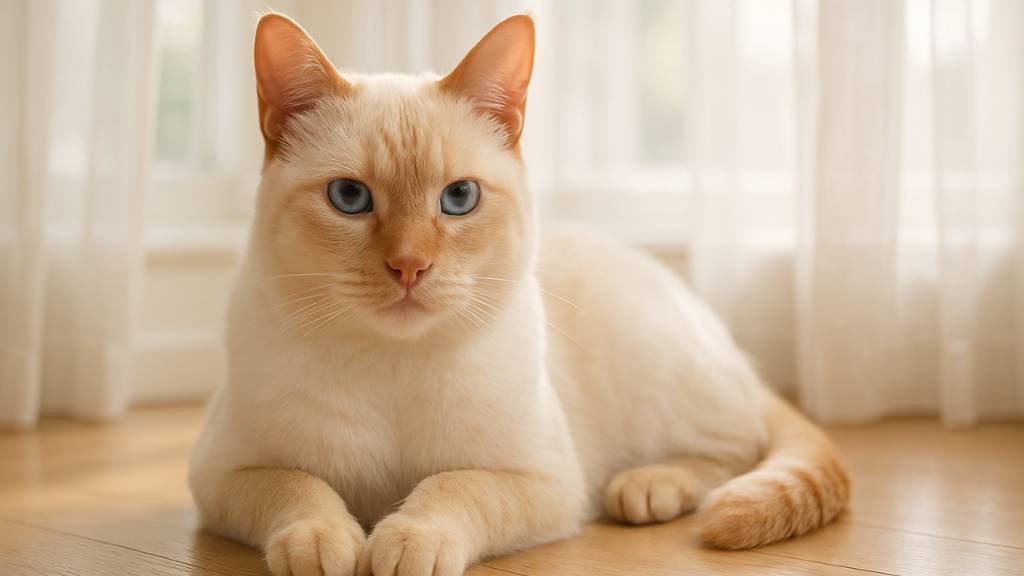
It’s a rare pastel palette that whispers rather than shouts.
8. Lilac Tortie
Lilac torties look like tortoiseshells caught in soft morning light. Lilac and cream swirl in a marbled coat that shows up in breeds like the British Shorthair and Persian.
It’s a pastel patchwork that balances softness with texture. A rare kind of understatement.
9. Silver Tipped
Silver-tipped cats sparkle without trying. These coats, seen in Chinchilla Persians, feature white undercoats with just the hair tips brushed in silver.
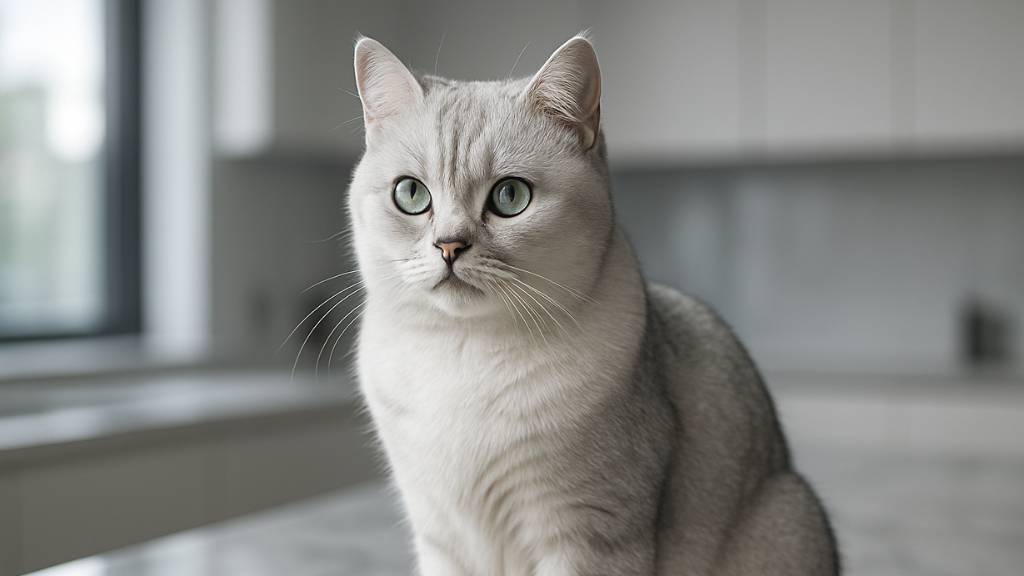
It’s the feline equivalent of a highlighter, catching the light with every move. Rare cat patterns like this one deserve their own spotlight.
10. Flame Point
Flame point cats bring the heat. Creamy bodies paired with vibrant orange-red markings make this coat a showstopper.
Siamese and Ragdoll lines carry the flame, and the contrast is nothing short of striking. These cats don’t just walk into a room. They blaze through it.
11. Seal Mink
Seal mink cats wear warmth. Their coats sit between solid and pointed, creating a plush gradient that’s soft to the eye and velvety to the touch.
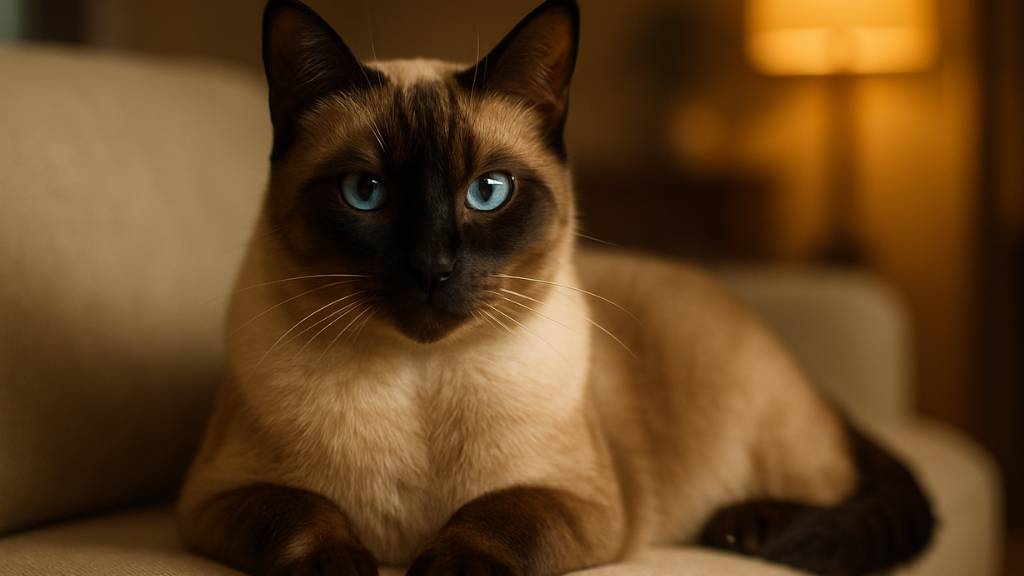
You’ll find this look in Ragdolls and Tonkinese, where the color depth runs as rich as the texture.
12. Blue Smoke
Blue smoke cats move like mist. Their dark bluish-gray coats fade into silver-tipped ends that catch the light with every stretch.
Seen in Maine Coons and Norwegian Forest Cats, this color has a dreamy, surreal quality that makes it one of the most unusual cat colors around.
13. Champagne
Champagne cats bring quiet elegance. Their coats show a subtle blush in a beige foundation, mostly seen in Burmese and Tonkinese breeds.
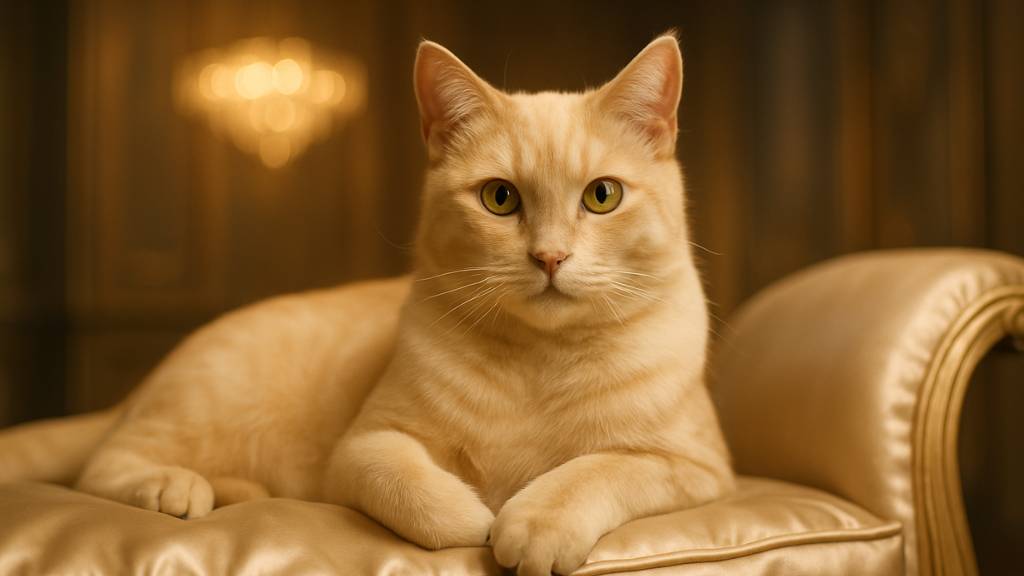
It’s not flashy, but it doesn’t need to be. Champagne color knows it looks good and lets you come to that conclusion on your own.
14. Golden Shaded
Golden shaded cats don’t wear coats. They wear crowns. With warm golden undercoats and deeper tipping, this look shows up in British Shorthairs and Persians.
It’s regal, dramatic, and unapologetically rich. Unique cat coats like this one redefine glamour.
15. Albino with Blue Eyes
Albino cats with blue eyes look like they stepped out of folklore. With snowy fur, pink noses, and icy blue eyes, they stand apart in every sense.
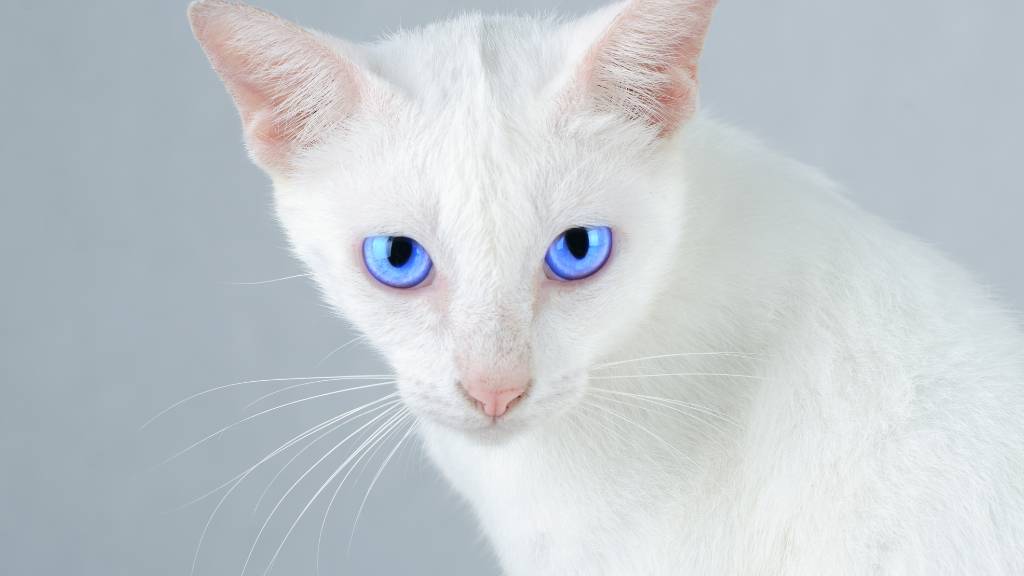
This rare genetic combo removes pigment entirely and requires gentle care. These rare, beautiful cats don’t just turn heads. They stop them.
What Is the Rarest Cat Color🐾
Those so-called rare cat colors pop up in the neighborhood. Some stay tucked inside pedigree charts and breeder circles. The rarest cat color comes down to genetics, limited bloodlines, and that show-stopping kind of beauty that turns heads on sight.
Leading the pack? Albino cats with blue eyes. These stunners lack pigment entirely and only appear when both parents pass on the rare gene.
Lavender coats come close, often misnamed as lilac, but even harder to find. And lilac torties? They’re pastel perfection with a marble finish that could rival a luxury countertop.
These cats inherit history, genetics, and a little extra sparkle. The rarer the hue, the longer you’ll remember it.
Caring for Cats with Unique Coats 🦺
Cats with unique cat coats deserve a little extra sparkle in their care routine. These rare looks aren’t just about good genes. They often come with their own maintenance manual.
Some coats hint at genetic quirks, while others need only a little polish to shine.
Sunlight can be a bit much for cats with minimal pigment. Albino beauties in particular benefit from shaded naps over sunny windowsills, and when in doubt, an online veterinarian consultation can help you tailor the best care routine.
Long-haired stars like golden shaded and cream point coats appreciate regular brushing to keep their texture lush. And for pastel queens like lilac or champagne? Gentle grooming goes a long way in keeping their colors crisp.
A quality diet keeps skin balanced and fur photo-ready. Add in routine checkups, and you’re not just pampering your cat. You’re protecting their glow.
Where to Find Rare Cats Responsibly📍
Finding a cat with one of those rare cat colors is a thrill, but finding one the right way is what really matters. These rare, beautiful cats don’t usually show up in shelters or surprise listings.
They come from carefully maintained bloodlines handled by breeders who focus on health, personality, and responsible care.
The best breeders do more than talk pedigrees. They show proof. Look for those registered with respected associations, open about lineage, and committed to clean, nurturing environments—always backed up with breeder verification. That glossy coat should come with confidence, not question marks.
At American Paws Club, we keep the search simple. We connect thoughtful cat lovers with ethical breeders who raise beautiful cats with care and credibility. Explore our available kittens for sale to find your perfect rare companion.
If a rare coat is on your radar, choose it with purpose. These cats deserve homes that respect their uniqueness and the care it took to create them.

1. Are rare cat colors more expensive?
Yes. Cats with rare coats often come from selective bloodlines, and breeders invest significant effort to maintain these traits. That extra rarity usually shows in the price.
2. Do rare cat colors affect a cat’s health?
For the most part, no. Coat color is cosmetic and does not impact health. The exception is albinism, which can leave cats sensitive to sunlight and better suited for shade.
3. Can I find rare-colored cats in shelters?
It is uncommon but possible. Most rare-colored cats come through breeders, though shelters occasionally surprise adopters with a unique coat that stands out, especially if you foster a cat, where rare surprises sometimes appear.
4. Which cat color is considered the rarest?
Albino cats with blue eyes take the top spot. With no pigment, icy eyes, and a genetic pairing that happens rarely, they hold the title of the hardest color to find.
5. Do rare cat coats require special grooming?
Yes, in some cases. Long-haired breeds like golden shaded Persians benefit from frequent brushing, while lighter coats such as albino or cream need extra care under the sun to maintain their condition.


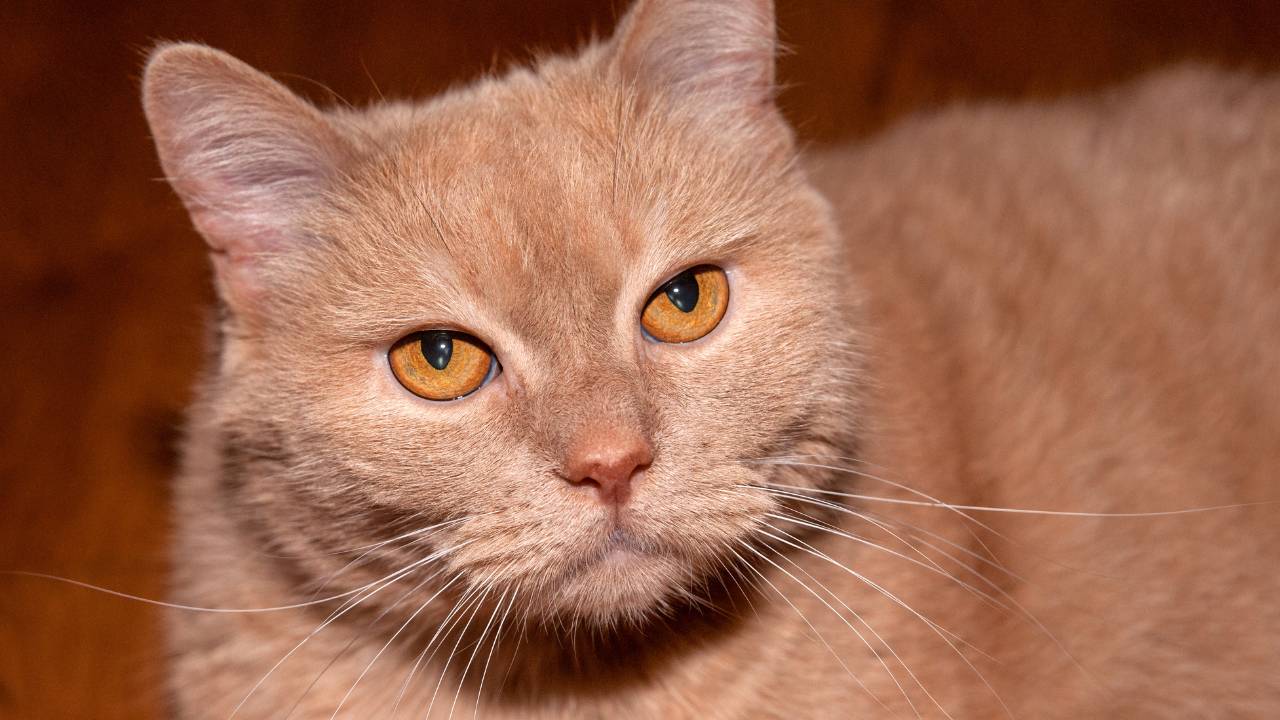
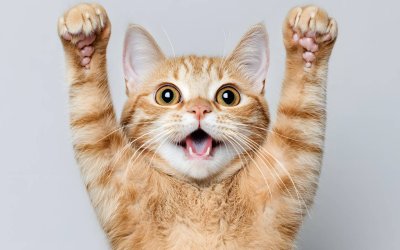

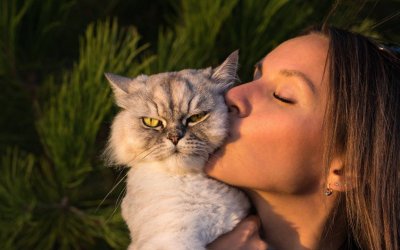
0 Comments